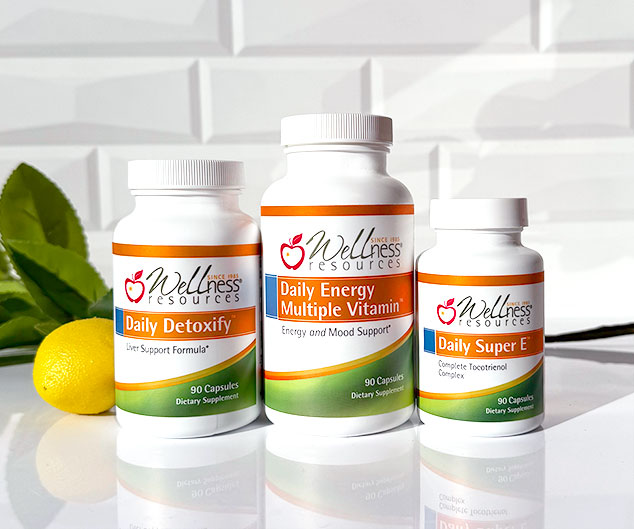Your cart
Your cart is empty.HEALTH NEWS
Children’s Multivitamins: High Quality vs. Low Quality
October 1, 2018

Do you remember those chalky children's vitamins shaped like Flintstone characters? Well, the newest children's vitamin trend is gummy vitamins that look and taste like candy. But, are they any better than candy? There are important quality differences among children's multivitamins that you can detect by looking at the label.
Iron Bisglycinate - Iron is vital for growth and brain development. In fact, iron in infancy is important for cognitive function later in life. Despite its great importance, the typical children's multivitamin either doesn't contain any iron or contains low quality iron. Cheap forms of iron, like ferrous sulfate or ferrous gluconate, can upset the stomach, cause constipation, and become toxic in high amounts. The best form of iron for children to supplement with the iron bisglycinate form. This highly absorbable form of iron does not cause upset tummies or iron toxicity.
Methylated Folate - Folate is the natural form of B9 (folic acid is the synthetic form). Folate is needed for healthy development and brain health. The very best form of folate to supplement with is a pre-methylated folate like Quatrefolic®. It is a huge plus if this form of folate is in your child's multivitamin!
Artificial colors - You also don't want to find artificial colorings in your child's multi. Artificial colors such as Red Lake #40 and Yellow #5 have been linked to behavior problems and hyperactivity in children.
Cheap vitamins and minerals - Many cheap multivitamins use forms of vitamins from sources like soy or lab-synthesized chemicals. Some ingredients to avoid are dl-alpha-tocopheryl-acetate, calcium oxide, cyanocobalamin, folic acid, ferrous sulfate, and pyridoxine hydrochloride.
It is certainly a worthwhile practice to give your child a multivitamin that covers their basic nutritional needs. Wellness Resources Super Mini-Multi contains the most pure, highest quality forms of nutrients and no junk fillers or additives. It's best to steer clear of low quality, cheap children's vitamins that are quite prevalent on the market. Know what to look for on the label of a multivitamin to ensure you are giving your child the highest quality nutrition possible!
What to Look for in a Children's Multivitamin
Coenzyme B12 - The highest quality, coenzyme forms of B vitamins are hard to find in any vitamins, much less a children's multivitamin. Coenzyme B vitamins are the most absorbable forms of B vitamins, making them easy for a child to utilize for energy production. The cheap, low quality form of B12 called cyanocobalamin actually produces a molecule of cyanide when it is metabolized. The high quality, coenzyme forms of B12 are methylcobalamin and adenosylcobalamin.Iron Bisglycinate - Iron is vital for growth and brain development. In fact, iron in infancy is important for cognitive function later in life. Despite its great importance, the typical children's multivitamin either doesn't contain any iron or contains low quality iron. Cheap forms of iron, like ferrous sulfate or ferrous gluconate, can upset the stomach, cause constipation, and become toxic in high amounts. The best form of iron for children to supplement with the iron bisglycinate form. This highly absorbable form of iron does not cause upset tummies or iron toxicity.
Methylated Folate - Folate is the natural form of B9 (folic acid is the synthetic form). Folate is needed for healthy development and brain health. The very best form of folate to supplement with is a pre-methylated folate like Quatrefolic®. It is a huge plus if this form of folate is in your child's multivitamin!
What to Avoid in a Children's Multiple Vitamin
Sweeteners - Sugar (sucrose, mannose, fructose) is often in a children's chewable multivitamin. Sugar can contribute to health problems and sugar cravings related to intestinal candida overgrowth. Sugar alcohols and artificial sweeteners are also used to enhance flavor in cheap chewable vitamins. Sugar alcohols can cause stomach distress, gas, and diarrhea. Artificial sweeteners have recorded side effects like migraine headaches, digestive distress, and attention issues.Artificial colors - You also don't want to find artificial colorings in your child's multi. Artificial colors such as Red Lake #40 and Yellow #5 have been linked to behavior problems and hyperactivity in children.
Cheap vitamins and minerals - Many cheap multivitamins use forms of vitamins from sources like soy or lab-synthesized chemicals. Some ingredients to avoid are dl-alpha-tocopheryl-acetate, calcium oxide, cyanocobalamin, folic acid, ferrous sulfate, and pyridoxine hydrochloride.
It is certainly a worthwhile practice to give your child a multivitamin that covers their basic nutritional needs. Wellness Resources Super Mini-Multi contains the most pure, highest quality forms of nutrients and no junk fillers or additives. It's best to steer clear of low quality, cheap children's vitamins that are quite prevalent on the market. Know what to look for on the label of a multivitamin to ensure you are giving your child the highest quality nutrition possible!
Share this content
Recent News
The Truth About Vitamin B12: Why 'Normal' Levels May Not Be Enough
The Gut-Heart Connection: How Your Microbiome Impacts Cardiovascular Health
What Are Endothelial Cells and How Do They Impact Heart Health?
PQQ: Powerful Antioxidant for Mitochondria, Energy, and Longevity
Stay Strong & Energized: How CoQ10 Supports Your Muscles and Heart Health

